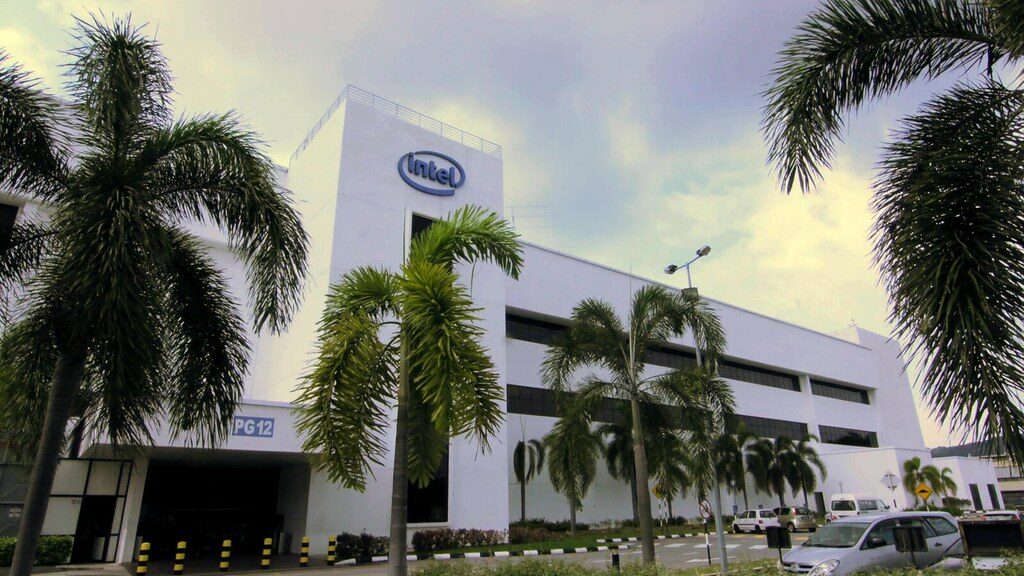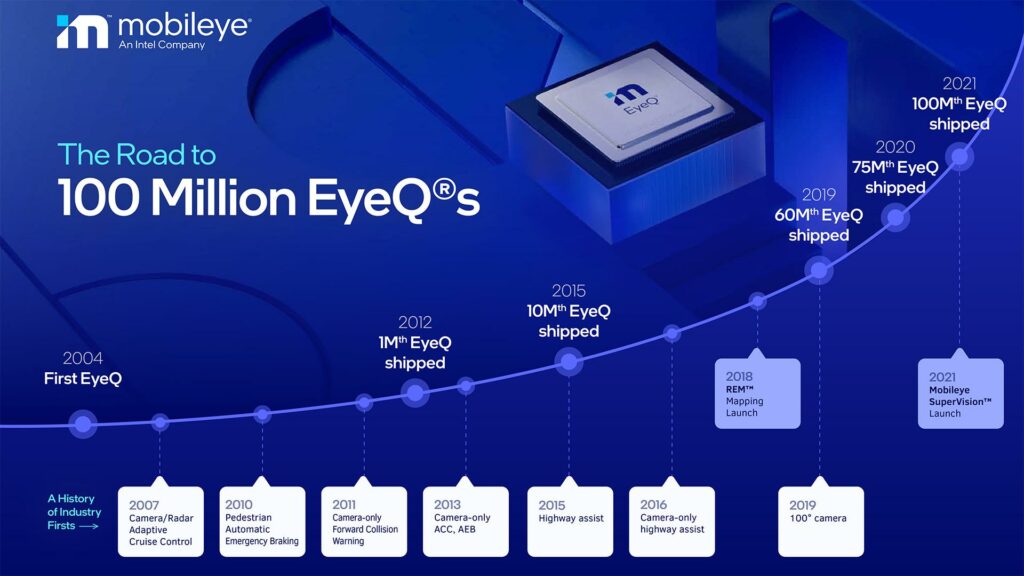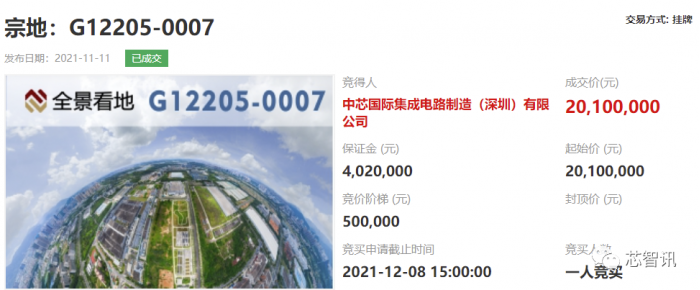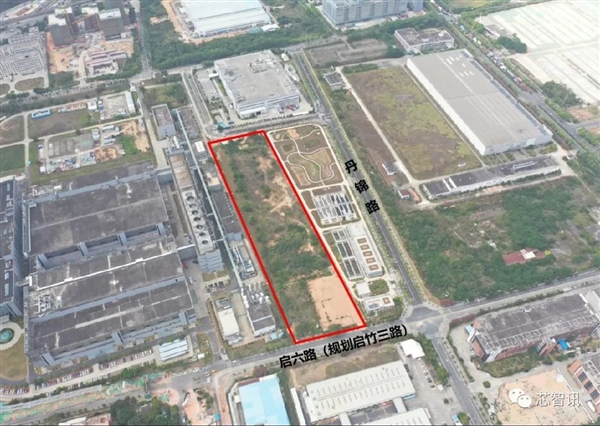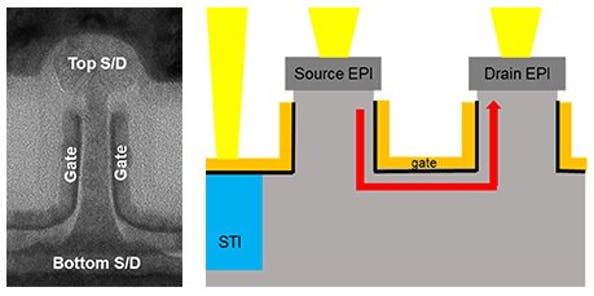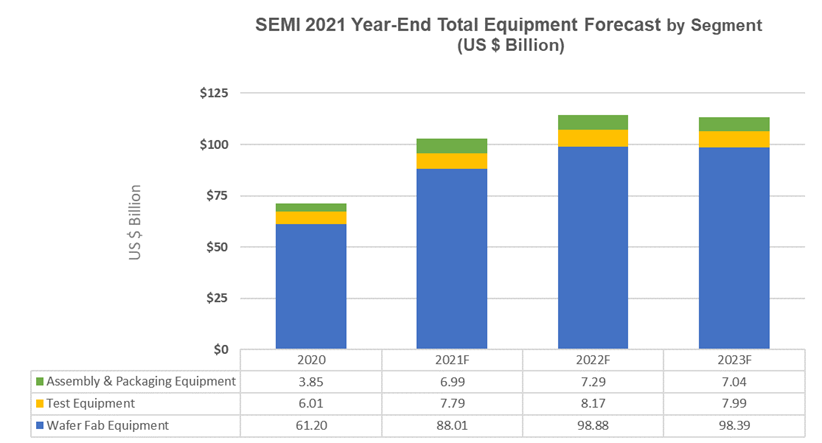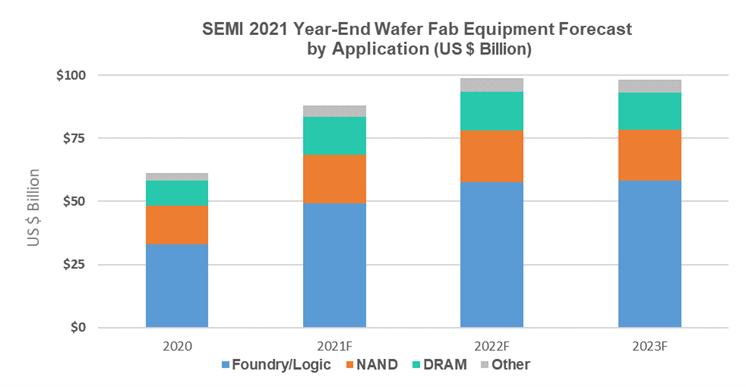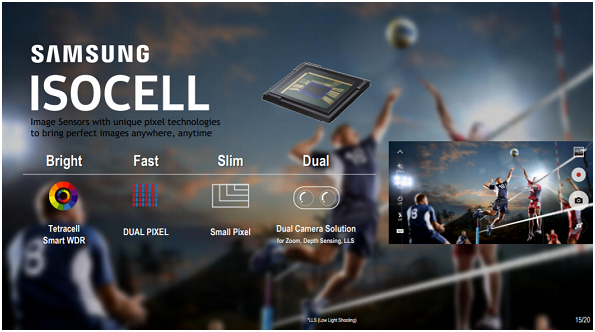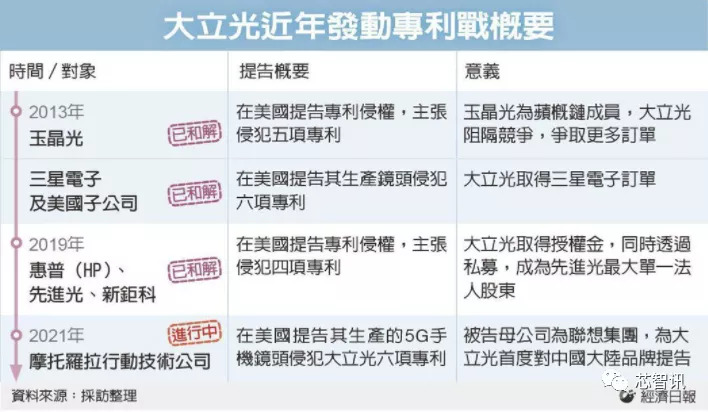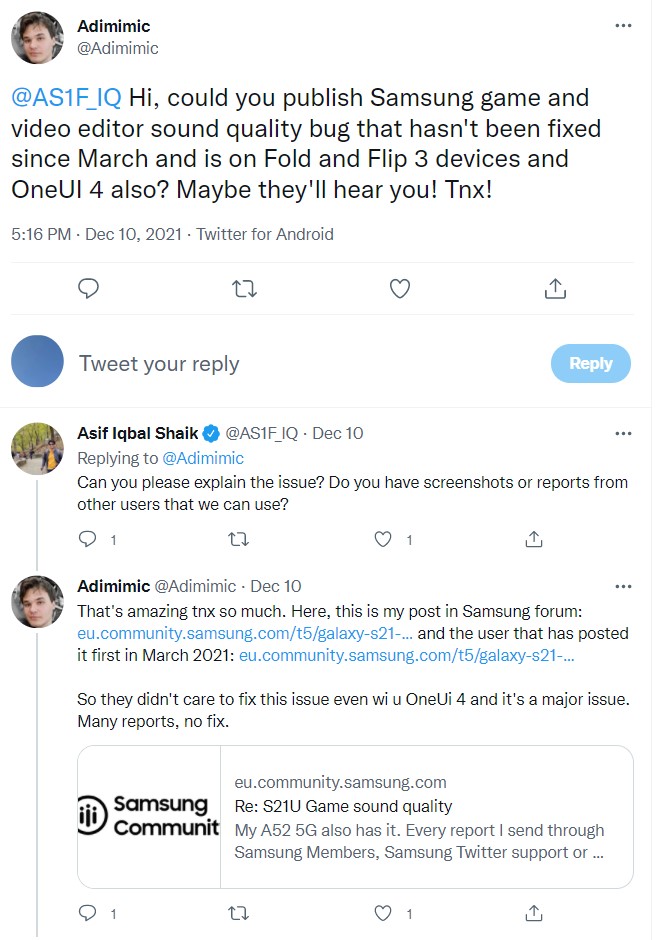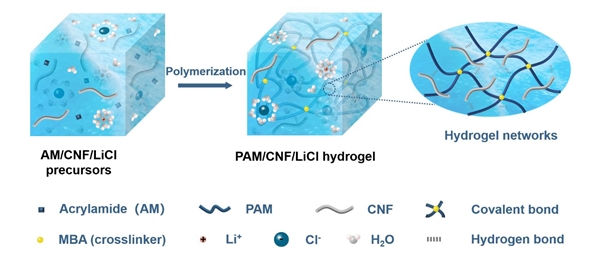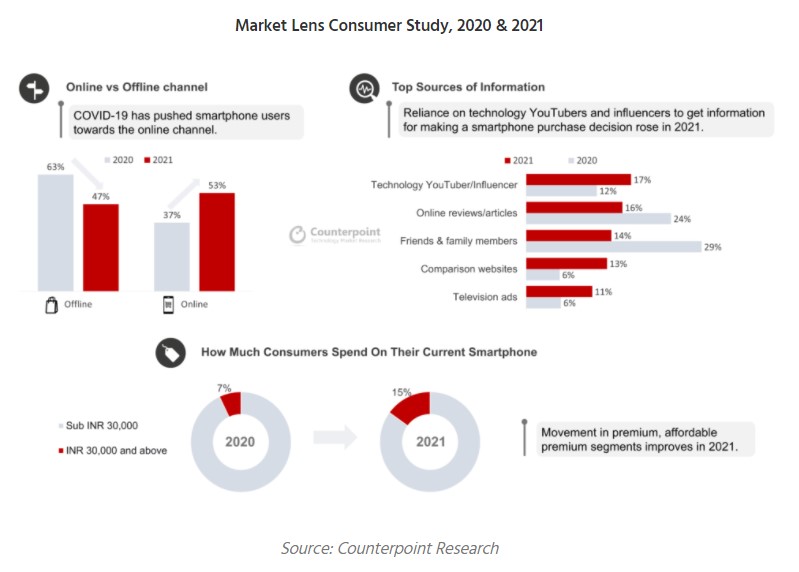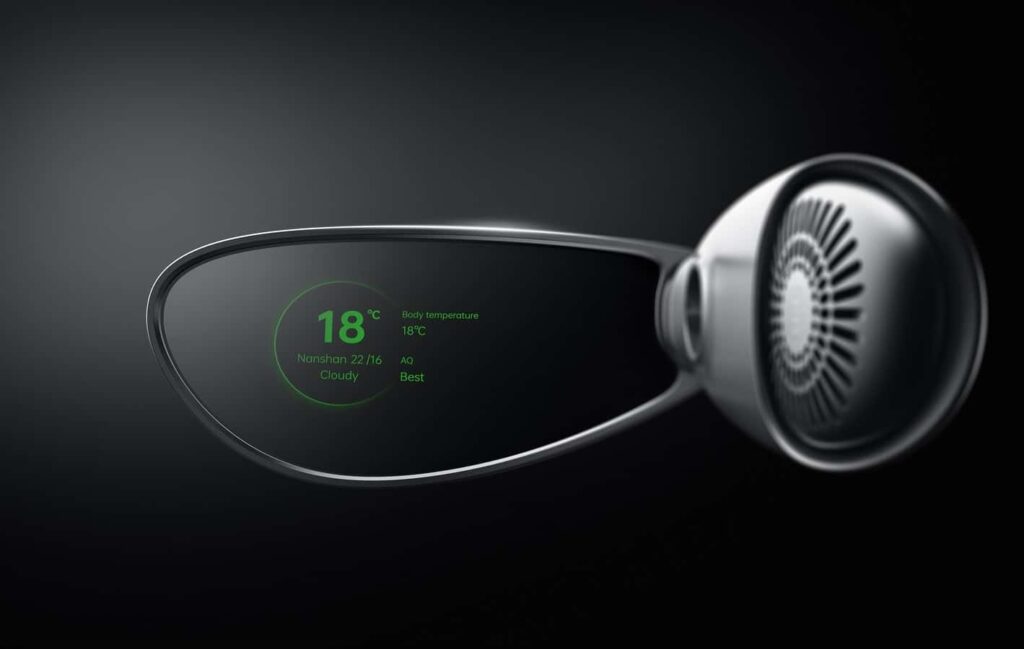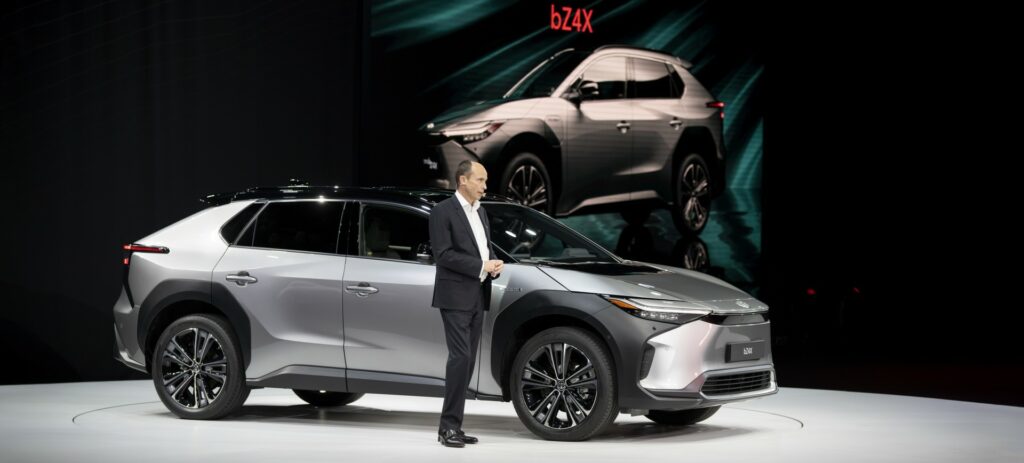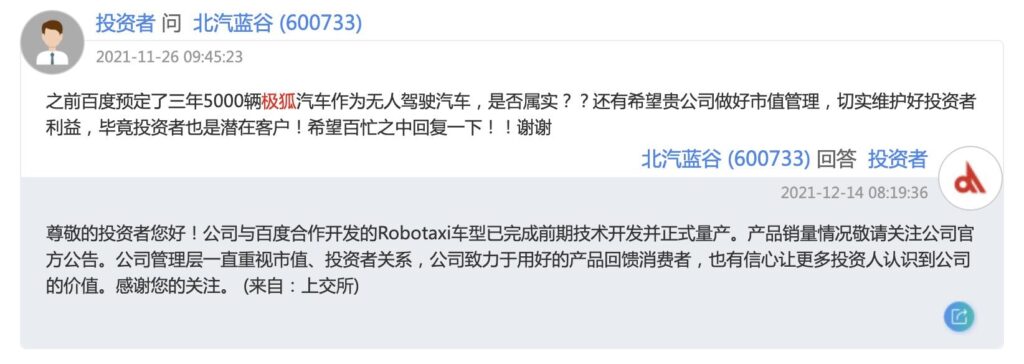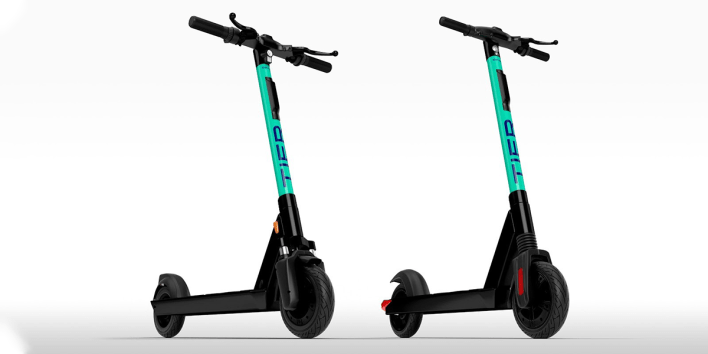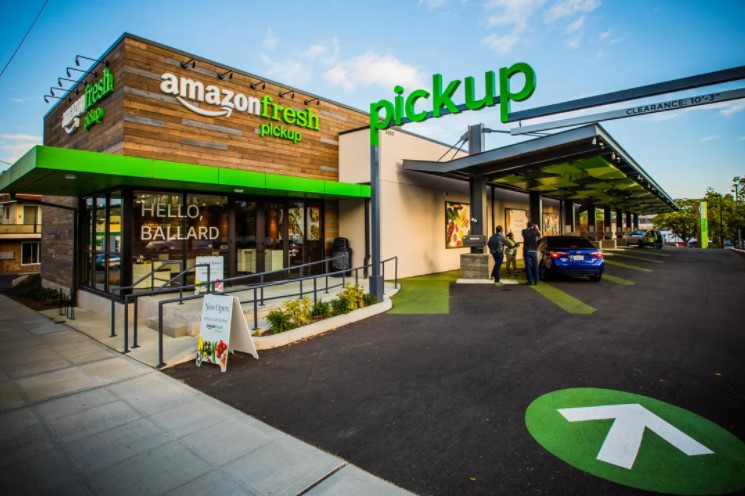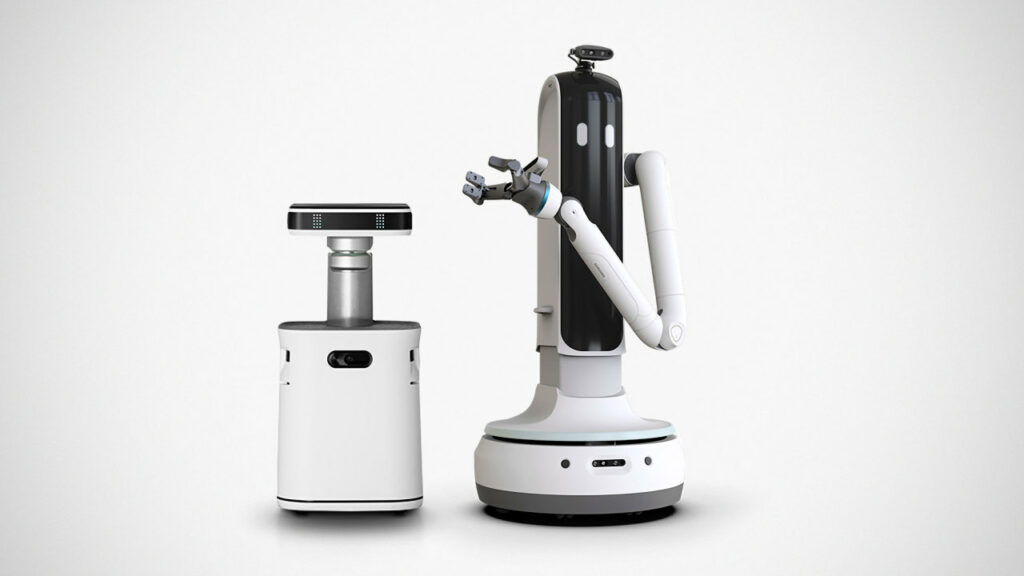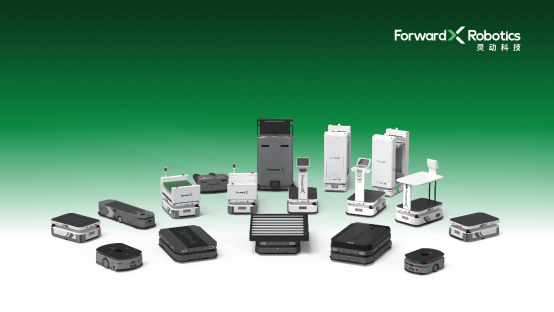
12-14 #Gym : Intel will invest USD7.10B to expand its manufacturing capabilities in advanced semiconductor packaging technology in Penang; IBM and Samsung have unveiled a new design for stacking transistors vertically on a chip; OPPO has announced its MariSilicon NPU based on the 6nm manufacturing process; etc.
Intel will invest MYR30B (USD7.10B) to expand its manufacturing capabilities in advanced semiconductor packaging technology in Penang, Malaysia. The addition of advanced packaging capabilities to Intel’s operations in Malaysia will strengthen its supporting activities and its global service center. (CN Beta, Straits Times, Reuters)
Intel’s Mobileye celebrates the shipment of its 100M EyeQ system-on-chip (SoC) in Dec 2021 — the brains behind modern advanced driver-assistance systems (ADAS). A large percentage of automobiles built today include this advanced safety technology, with about 60% of Mobileye’s total sales volume coming in the past four years. Studies show that basic passive ADAS features like forward-collision warning, lane departure warning and blind spot detection (several of which Mobileye pioneered) reliably reduce the number and severity of crashes. (Laoyaoba, Mobileye, Intel)
So far, Nvidia has announced that it is building a platform for metaverse. Called Omniverse, its chips are designed for “connecting 3D worlds into a shared virtual universe”. Now Intel will release a new series of graphics processors starting in 1Q22, and says will power the metaverse. Intel’s Raja Koduri, who leads Intel’s Accelerated Computing Systems and Graphics Group, has revealed that the computing power of today’s chips will need to improve 1000-fold to power the metaverse. (Laoyaoba, Quartz, Yahoo)
According to industry predictions, semiconductors will enter the angstrom scale (Å, angstrom, 1 angstrom = 0.1nm) at the scale of 2025, of which 2025 corresponds to A14 (14 Å = 1.4nm). In addition to the new transistor structure and 2D materials, there is also a very critical part of the High NA (High Numerical Aperture) EUV lithography machine. According to ASML, the first prototype trial machine will be opened in 2023 and is expected to be installed by imec (Belgian Research Center for Microelectronics). After 2025, mass production is expected. The first is expected to be delivered to Intel. Gartner analyst Alan Priestley has said that the unit price of the 0.55NA next-generation EUV lithography machine will double to USD300M. ASML has indicated that higher lithography resolution will allow the chip to shrink by 1.7 times while increasing the density by 2.9 times. In the future, processes more advanced than 3nm will rely heavily on high NA EUV lithography machines. (CN Beta, My Drivers, Gaming Sys)
Foundry capacity supply will remain tight in 2022 as global IC shortage has yet to ease and IC designers continue to seek more capacity support, although demand for certain chips like consumer MCUs is slowing down and their inventories are rising, according to Digitimes. (Digitimes, Laoyaoba)
Following the public announcement of SMIC Shenzhen’s “12” wafer foundry production line supporting plant project selection plan” in Oct 2021, on 11 Nov, the Shenzhen land mining rights trading platform publicized the Pingshan District as the G12205-0007 parcel. The result of the transaction was obtained by SMIC Shenzhen at a reserve price of CNY20.1M. (My Drivers, Sina, CN Beta)
IBM and Samsung have unveiled a new design for stacking transistors vertically on a chip. With current processors and SoCs, transistors lie flat on the surface of the silicon, and then electric current flows from side-to-side. By contrast, Vertical Transport Field Effect Transistors (VTFET) sit perpendicular to one another and current flows vertically. They estimate VTFET will lead to processors that are either twice as fast or use 85% less power than chips designed with FinFET transistors. IBM and Samsung claim the process may one day allow for phones that go a full week on a single charge. (Gizmo China, Interesting Engineering, IBM, Fierce Wireless, Engadget)
OPPO has announced its MariSilicon NPU based on the 6nm manufacturing process. The new MariSilicon X NPU is an imaging-based chipset that was independently designed and developed by the company. The new chipset will offer real time AI computing to improve energy efficiency while also offering “industry leading” ultra HDR capabilities. This chipset would also enable lossless real time RAW captures and maximize the RGBW sensor’s performance as well as offer extreme dynamic range via 20bit HDR. (Digital Trends, GSM Arena, Gizmo China, IT Home, CN Beta, UDN)
Global sales of total semiconductor manufacturing equipment by original equipment manufacturers are forecast to reach a new high of USD103B in 2021, surging 44.7% from the previous industry record of USD71B in 2020, according to SEMI. The growth is expected to continue with the global total semiconductor manufacturing equipment market expanding to USD114B by 2022. The wafer fab equipment segment, which includes wafer processing, fab facilities, and mask/reticle equipment, is projected to expand 43.8% to a new industry record of USD88B in 2021, followed by a 12.4% increase in 2022 to approximately USD99B. Wafer fab equipment in 2023 is expected to decrease slightly by -0.5% to USD98.4B. (Laoyaoba, PR Newswire, SEMI.org)
Sony is reportedly joining hands with Qualcomm and TSMC to keep Samsung Electronics, which is expanding its market share, in check. Sony and Qualcomm are planning to establish a joint camera research lab in San Diego of the United States. The two companies plan to develop high-quality cameras based on Qualcomm’s mobile application processor (AP) Snapdragon and Sony’s image sensors. Sony is planning to focus its efforts on developing image sensors optimized for Snapdragon chips. Sony and TSMC have decided to invest USD500M and USD7B, respectively, in a foundry plant to be built in Kumamoto Prefecture, Japan. TSMC plans to break ground for the plant in 2022 and start mass production in 2024. TSMC’s Japanese plant will mainly produce semiconductors of 22-28nm. (Laoyaoba, Business Korea)
Largan Precision has sued Motorola Mobility for patent infringement. Largan said it has filed a lawsuit with a court in Northern District of California, accusing Motorola Mobility, which is under Lenovo Group, of infringing on 6 patents related to 5G smartphone camera lens production. (UDN, LTN, China Times, Laoyaoba, CN Beta, Focus Taiwan)
Some Samsung Galaxy smartphone users have been complaining of audio issues on their devices. Some users say that the problem started with the One UI 4 update, but others say the issue has been present since the introduction of One UI. The audio issue is present on most high-end and mid-range smartphones, including the Galaxy S10, S20, S21, Z Flip3, Z Fold2, Z Fold 3, and A52 5G. Audio on affected devices sounds flat and low in quality, especially while playing games or editing videos (using the built-in video editor). The issue affects low and mid-range audio frequencies the most, and it is most noticeable on phones with high-quality loudspeakers. (Gizmo China, SamMobile, Twitter, Samsung Community)
Volvo Car Group and Northvolt has signed a binding agreement related to battery development and manufacturing partnership. As part of a SEK30B (EUR2.9B / USD3.3B) investment, the two partners will establish a joint research and development (R&D) centre in Gothenburg, Sweden. It will become operational in 2022. Volvo plans to build a battery production facility in Europe starting in 2024, with an annual capacity of up to 50 gigawatt hours (GWh), which will produce batteries for half a million cars a year. Volvo plans for half of its sales to be battery-electric by 2025, ahead of offering a fully-electric lineup by 2030. (Laoyaoba, Financial Times, Inside EVs, Auto Week)
Toyoda Iron Works to develop auto parts using sorghum fibers, aiming for productization by 2024. Toyoda Iron Works, a Toyota component maker, and Nagoya University have begun collaborating on developing plant fibers. The unit price of glass fiber is about 200 yen/kg, while CNF is about 2,000 yen/kg, which is ten times more than glass fiber. In order to reduce the price, Toyoda Iron Works and Nagoya University are studying the efficient separation of CNF from sorghum through a manufacturing process. (My Drivers, Asian Tech Press)
India’s local next-generation standards touted as 5Gi, is now set to be merged under a “compromised formula” between the industry and indigenous standards proponents following the Department of Telecommunications technical arm, Telecommunication Engineering Centre (TEC)’s opposing views. The 5G Radio Interface Technology (RIT) called 5Gi is an initiative of the Telecommunications Standards Development Society, India together with academia, whose merger plan with the global 5G standards, would now be submitted to the International Telecommunication Union (ITU) and India’s engineering center. (Gizmo China, India Times)
HMD Global, which sells the Nokia brand of mobile phones, has started exporting its Nokia 105 feature phone to the UAE market, leveraging its partnerships with local players in India. HMD Global Vice President (India and MENA) Sanmeet Singh Kochhar has indicated that they have started exports from India. Till now, all of their phones sold in India are made in India. Not only are they made in India, but they are also focusing on making them with Indian manufacturing partners and they are now kickstarting exports from India. (CN Beta, Lokmat, India Times)
The extended presence of COVID-19, especially the high number of casualties during its second wave in 2021, has given a sharp turn to digitization in India. According to Counterpoint Research, in 2021 more than half of the country’s smartphone consumers bought their devices online, compared to more than one-third in 2020. Furthermore, the affordable premium and premium segments became more active in 2021 with 15% of the respondents being from the INR30,000 and above price band, compared to 7% in 2020. (GizChina, IT Home, Counterpoint Research)
Meta Platforms, the company formerly known as Facebook, has spent USD60M to buy the naming rights to the word “Meta” held by the financial services company Meta Financial Group. Meta Financial has disclosed that it has agreed to sell the Meta name and related names, including Metabank and Meta Financial Group, as well as all Meta-related domain names and social media accounts, to a company called Beige Key LLC. (CN Beta, Barron’s, SEC, Reuters)
Facebook parent Meta Platforms has moved its artificial intelligence (AI) group to the Reality Labs unit developing augmented and virtual reality products. The shift comes as Meta invests more money in AR and VR to develop the metaverse. With the change, the AI team, which became central to Meta’s efforts to detect harmful content on Facebook, will focus more on metaverse-related efforts. (Laoyaoba, The Information)
OPPO has announced Air Glass, which it calls “assisted reality glasses”, and would work like a head-up display (HUD). Air Glass has a monocle design and can be worn with a half-frame, or as full-frame spectacles for those who require prescription lenses. The metal body houses an OPPO-designed Micro LED projector the size of a coffee bean, and inside the dual-layer sapphire glass lens is a custom optical diffraction waveguide capable of displaying color and grayscale content at up to 1,400nits brightness. (Digital Trends, Android Headlines, IT Home, CN Beta)
LG has announced LG StanbyME, which is a 27” TV that can operate wirelessly on battery power and be wheeled around on its height-adjustable stand. When attached to the stand, the display can swivel, tilt, or be rotated to portrait orientation. LG says the StanbyME can last for up to 3 hours on a charge. (Engadget, The Verge)
Toyota Motor Europe (TME) has outlined a plan for a 100% CO2 reduction in all-new vehicle sales in the market by 2035. This “goal” will be preceded by a sales mix of at least 50% zero-emission vehicles (ZEVs) in Western Europe by 2030. Toyota has also reiterated its vision of plug-in hybrids and hydrogen fuel-cell vehicles playing a significant role in that mix of sales, seeing a role for internal combustion engines for quite some time. (CN Beta, Toyota, Reuters, Electrek, Nikkei)
Toyota models 2018 or newer will need a subscription for the key fob to support remote start functionality. Buyers are given the option to choose from an array of Connected Services when purchasing a new Toyota, and one of those services, called Remote Connect, include the ability to remotely start the car with the owner’s key fob. (Engadget, The Verge, The Drive, Toyota)
The Robotaxi model of jointly developed by BAIC BluePark New Energy and Baidu has completed the preliminary technical development and officially mass-produced. On 17 Jun 2021, ARCFOX and Baidu jointly released the new mass-produced shared unmanned vehicle Apollo Moon. The car is based on the Arcfox Alpha T (ARCFOX αT) model, equipped with Baidu’s lidar solution, with 800TOPS computing power, it can realize L4 autonomous driving, and the fusion design of lidar + camera ensures the vehicle’s accurate perception of the surrounding environment. (CN Beta, My Drivers, Breaking Latest)
Tier, a Berlin-based e-scooter company that is quickly expanding throughout Europe, has acquired Vento Mobility, the Italian subsidiary of Wind Mobility. Tier has also acquired Nextbike, a German bike-sharing platform, a move to both become multi-modal and further consolidate its micromobility empire. (TechCrunch, Automotive World, Tier)
Amazon has allegedly spent much of the 2020 trialing a product known internally as Amazon Fresh Marketplace. The service allows UK Prime subscribers to order groceries from 2 major supermarket brands, with same-day delivery fulfilled by the company’s Flex drivers. In 2022, Amazon reportedly plans to bring the service to the US and the majority of Europe. (Engadget, The Information, CNET)
Samsung Electronics has promoted its task force on robotics development to a regular business team, signaling that Samsung will put more efforts and resources into promoting the business as one of its future growth engines. The sector is one of the areas that the company said it will invest in heavily over the 3 years. (CN Beta, Korea Herald, KED Global, Arirang, Korea Times)
Beijing-based intelligent robot developer ForwardX Robotics has raised nearly CNY200M (USD30M) in its Series C round of financing. This investment brings the total funding raised by ForwardX to over USD100M. ForwardX plans to invest the proceeds towards new products development, supply chain and global expansion. (TechCrunch, Pandaily, Deal Street Asia, TMTPost)

